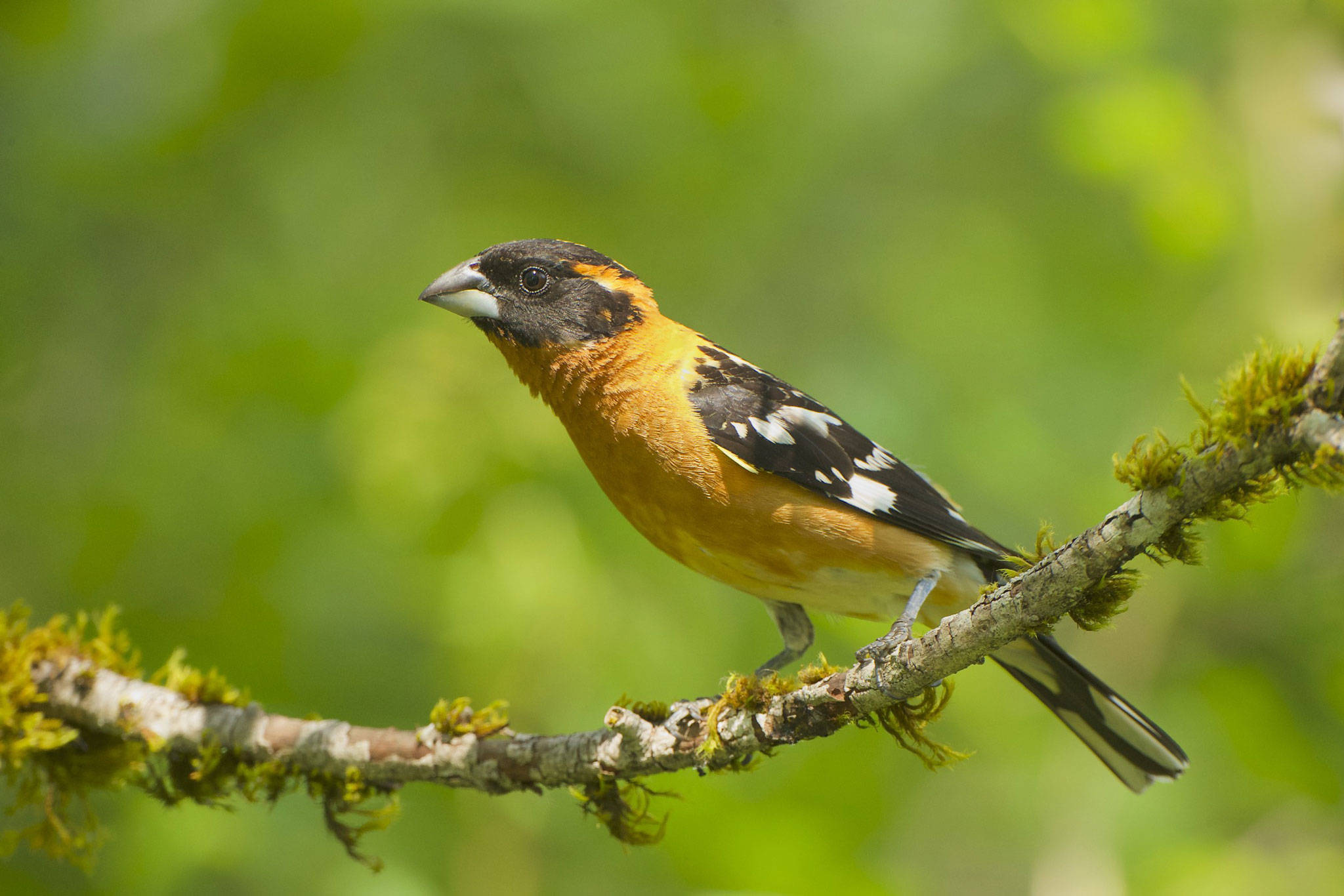The Black-headed Grosbeak is a bird of our summers, so it seems only fitting that it should be included in the Grays Harbor birds before it heads south for the winter. I have heard many reports from friends who have these lovely birds at their feeders, but I have yet to entice them to visit mine; maybe they aren’t fond of the beach. At any rate, here is a bit more information about them, and a great photo by Gregg Thompson.
General Description: Black-headed Grosbeaks are known as much for their beautiful songs as for their colorful plumage. But while both sexes are wonderful singers, only the male has the fancy colors. Breeding males are black, white and cinnamon, and the females are much more subdued. The juvenile birds are also a bit drab. Grosbeaks are a good-sized bird with a large conical beak, large heads, and short, thick necks. As for their song, it has been described by the folks at the Cornell Lab of Ornithology as “a tipsy robin welcoming spring.”
Size: 8 1/4 inches in length, a wingspan of 12 1/2 inches, and weighing 1.6 oz.
Habitat: These birds can be found around the edges of mixed forest and deciduous trees and prefer heavy brush near streams. They are not really a bird of coniferous forests, but will seek out islands of broadleaved trees and bushes within the forest. They can be seen in the mountains, along desert streams, and in backyard gardens and city parks.They like large trees and a diverse underbrush.
Behavior: The Black-headed Grosbeak is another bird that prefers to pick a conspicuous spot from which to sing loudly (males and females have different songs), yet is seldom seen in the dense understory where they spend time gleaning insects and seeds. They are not adverse to hanging around feeders in your rural yard, and may show up in great numbers to clean off a tray full of sunflower seeds. Here is a link to hear their songs:
http://www.allaboutbirds.org/guide/Black-headed_Grosbeak/sounds
Diet: During summer, the grosbeak eats seeds, insects, spiders, snails, and berries. On their winter grounds in Mexico, they are one of the few birds that can eat Monarch Butterflies. Since Monarchs eat milkweed, the toxins that build up in their body prevents most prospective predators from eating them. The grosbeaks feed on monarchs in roughly 8-day cycles, time enough to eliminate the toxins.
Nesting: Black-headed Grosbeaks are monogamous for just one breeding season. The female builds a bulky, loosely constructed nest of twigs, stems, rootlets, and pine needles on the outer branch of a broadleaved tree or shrub. The nest is an open cup lined with hair, rootlets, and fine plant materials. Both parents incubate the 2 to 5 eggs for 12 to 14 days. Both brood the young for about a week, and both bring food to the nest. The young leave the nest at about 10 to 14 days but are unable to fly for another 2 weeks. Both parents continue to feed them until they can fly. Grosbeaks have only one brood a year.
Migration: Black-headed Grosbeaks wander into berry-rich areas following the nesting season, gathering into migrating flocks that head south to Mexico in the early fall and return in the late spring.
Conservation Status: According to the Breeding Bird Survey, the numbers of Black-headed Grosbeaks has significantly increased in Washington since 1966. They benefit from some suburban development and logging as that increases the amount of broadleaved vegetation, but need a certain density of large deciduous trees. They are not a bird of suburbs but can be found in more outlying areas that are semi-rural, maybe have some old orchard trees in the “back forty”, and lots of berries in the neighborhood.
When and Where to Find in Grays Harbor: Black-headed Grosbeaks can be found from mid-May until mid-August or sometimes mid-September in Garry Oak prairies still found in the Elma south to Oakville corridor, or along streams among the Big-leafed Maples of the Chehalis River basin. Just listen for their song.



